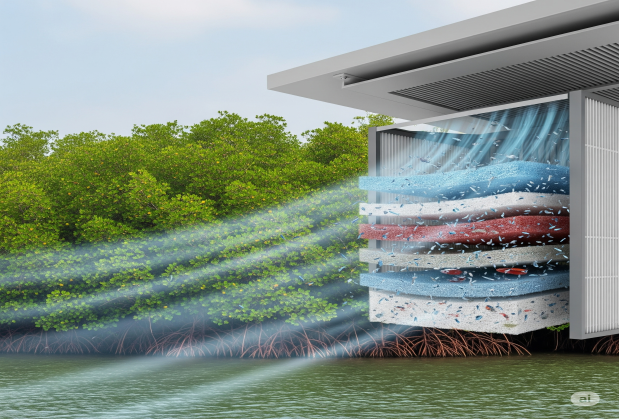
Mumbai's Mangroves under Threat: the Alarming Reality of Microplastic Contamination and How Technology Can Help
Mumbai's Mangroves under Threat: the Alarming Reality of Microplastic Contamination and How Technology Can Help Mumbai, India
A recent study has cast a stark spotlight on the escalating environmental crisis in Mumbai's vital mangrove ecosystems: the pervasive presence of microplastics. Mumbai's mangrove areas contain, on average, a staggering 6,730 microplastic particles. Learn about Direct Fired Chiller | See VAM Product Page | CCHP Systems | Pump Solutions
-
HVAC Systems and Air Filtration
Traditionally focused on indoor air quality and thermal comfort, modern HVAC systems equipped with high-efficiency filters can significantly reduce airborne microplastics. High-Efficiency Particulate Air (HEPA) filters are designed to capture 99.97% of particles as small as 0.3 microns.
-
VAC (Vacuum) Systems and Source Control
Industrial and commercial settings, particularly those involved in plastic manufacturing, recycling, or handling synthetic materials, are significant sources of microplastic release into the environment. Industrial Vacuum Systems prevent these particles from becoming airborne and subsequently being discharged into wastewater or the atmosphere, which can then settle into coastal ecosystems.
-
VAM (Ventilation and Air Management) Systems
A broader term encompassing ventilation and air handling units. Advanced filtration in exhaust systems helps industrial and municipal exhaust systems remove microplastics before air is released into the environment.
A Holistic Approach is Key
While these technological solutions offer promising avenues for mitigation, it's crucial to acknowledge that they are part of a larger, holistic approach. However, by investing in and implementing advanced HVAC, VAC, and VAM systems with effective filtration, we can significantly reduce the flow of microplastics into vulnerable ecosystems like Mumbai's mangroves, safeguarding these invaluable natural assets for future generations.
